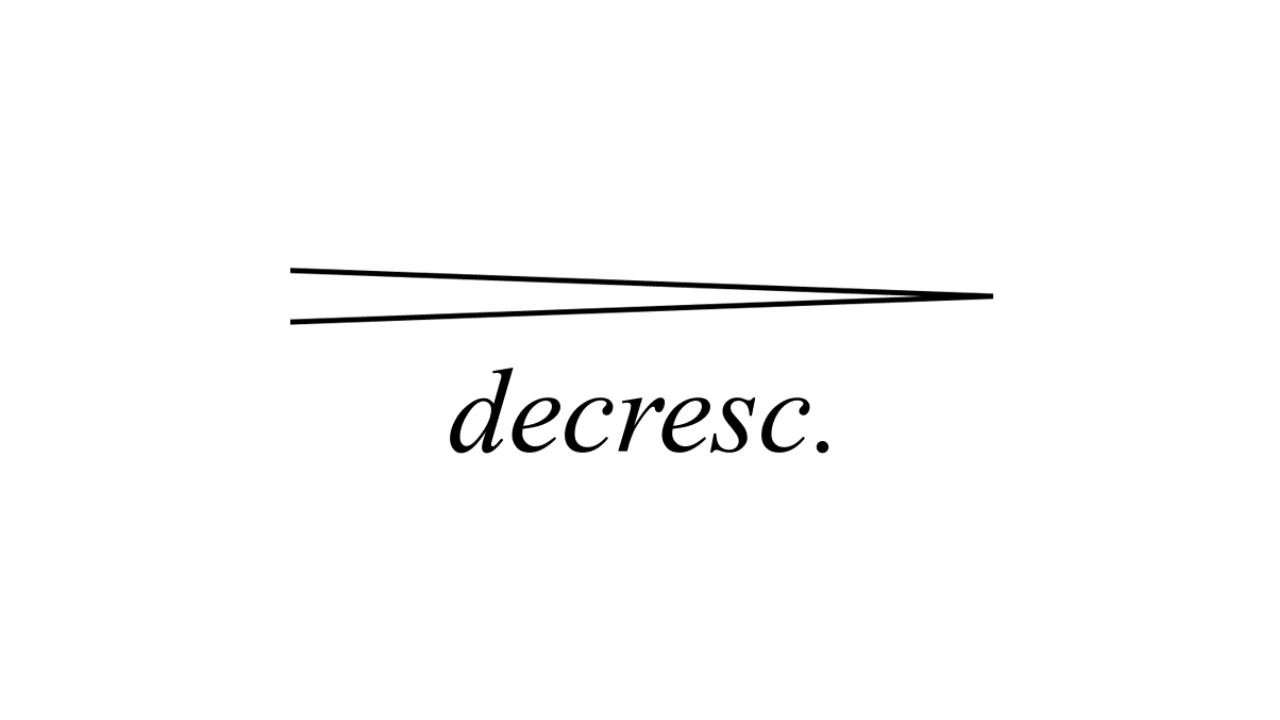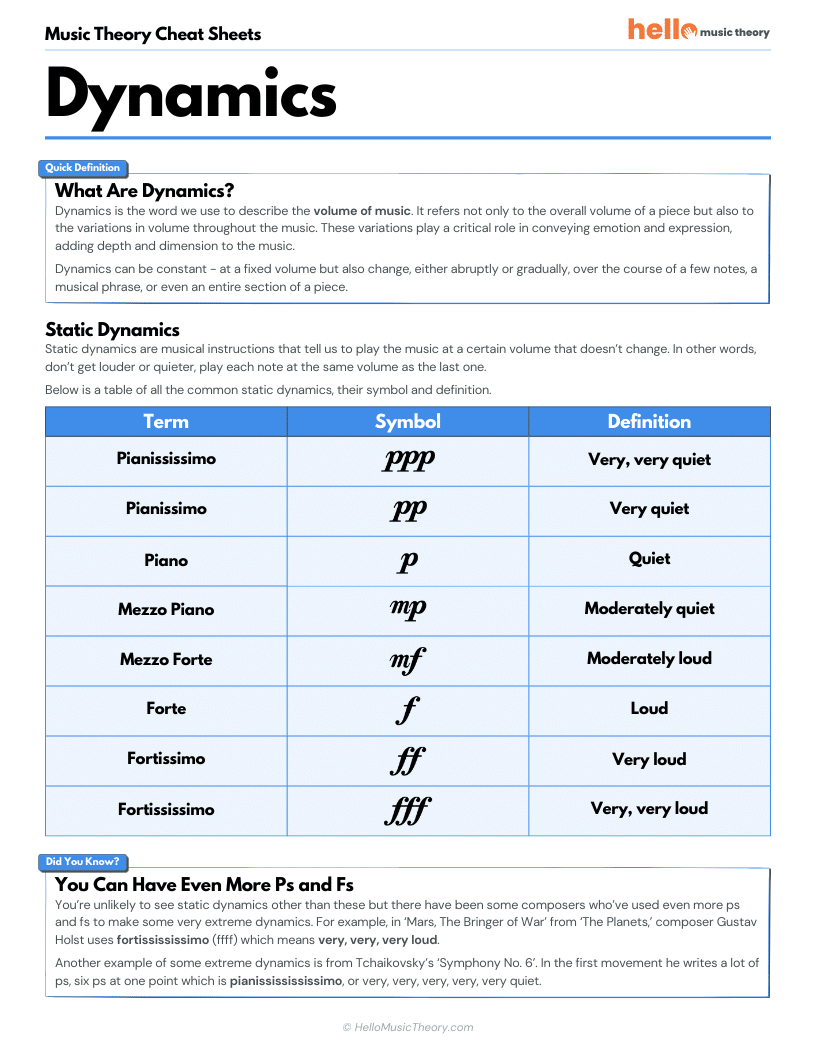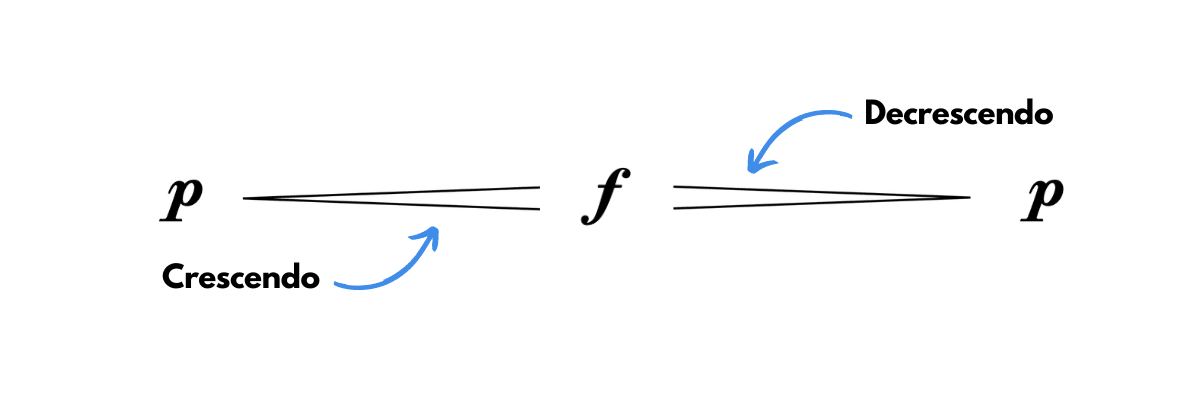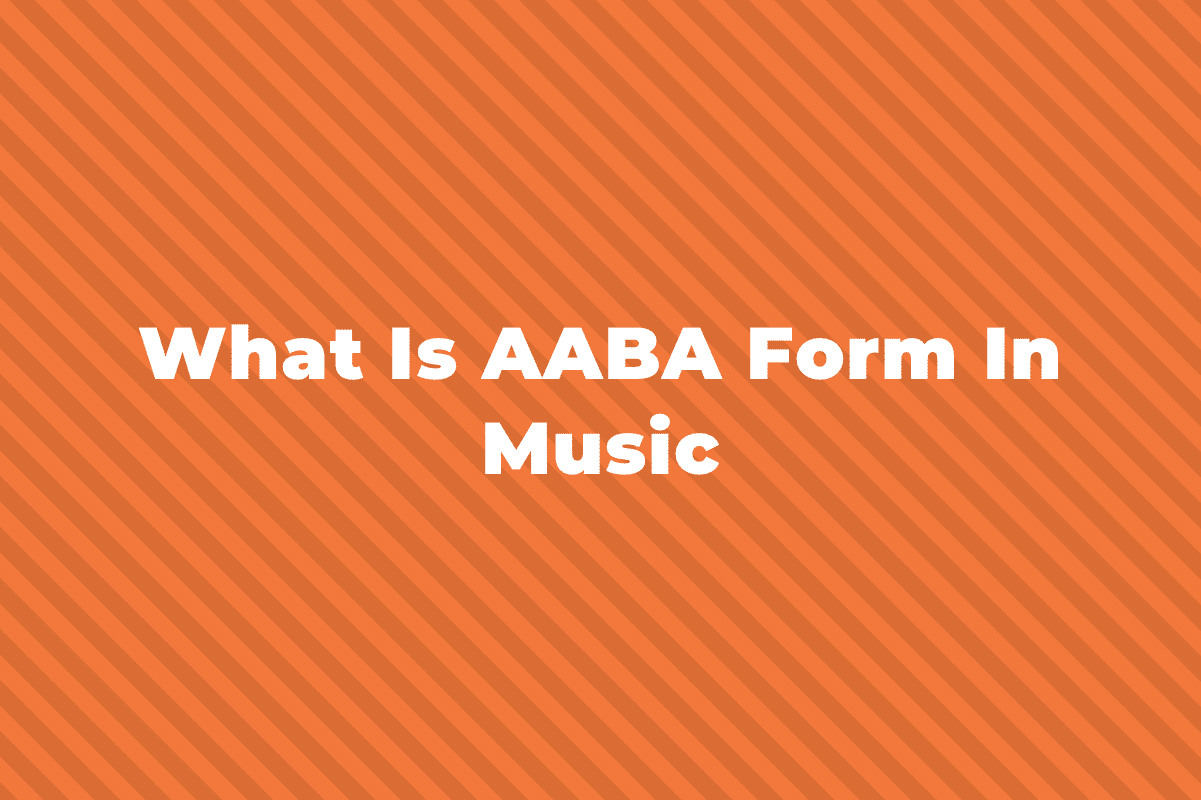Decrescendo is an Italian word that means “to decrease.” In the context of music, it’s a type of dynamic marking, which means to gradually get quieter.
It’s notated in a couple of different ways. Firstly, by writing the word decrescendo below the section of music that it applies to. This is often abbreviated to decresc.
However, it’s more common to see a hairpin symbol. This is where two lines start apart and get closer together until they’re touching, as shown below.

You’ll often see a dynamic marking before and after the decrescendo symbol. This gives the performer an idea of what volume they’re aiming for when gradually decreasing in volume.

Get Our Dynamics Cheat Sheet
Learning about dynamics? Sign up for our newsletter and get our dynamics cheat sheet completely free.
DOWNLOAD PDFThe Opposite of Descrescendo

The opposite of decrescendo is crescendo which means to gradually increase in volume.
It’s notated in a similar way, by either writing cresc. below the music or by a hairpin symbol.
But instead of the two lines starting apart and gradually getting closer together, they start together and gradually get further apart.
Did You Know?
The first recorded use of decrescendo was in 1806, in the dictionary of composer and author Thomas Busby.
Related Terms To Decrescendo
Below are some terms that are often used alongside decrescendo:
- Dynamics – Dynamics is the word we use to describe volume in music.
- Crescendo – The opposite of decrescendo, which means to gradually increase in volume.
- Diminuendo (dim.): From the Latin word deminuere, it translates to “diminishing.” It refers to the gradual decrease in the volume of music. It means the same thing as decrescendo.
- Morendo: From the Latin word moriendum, it translates to “dying.” It indicates a gradual decrease in dynamics and tempo.

Get Our Dynamics Cheat Sheet
Learning about dynamics? Sign up for our newsletter and get our dynamics cheat sheet completely free.
DOWNLOAD PDF


